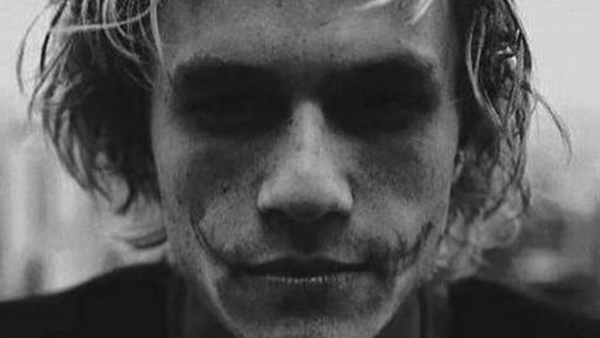The Dark Truth Behind Heath Ledger's Joker
2. Ledger's Method

Ledger's own words don't quite do justice to the process that he underwent to build his character. As well as the preparation Nolan had given him - everything from A Clockwork Orange to Sid Vicious were inspiration points - he had locked himself away, crafted the notorious Joker diary and basically used the experience as a cocoon from which The Joker would ultimately emerge.
There's some thinking that that transformation was total at that point: that he would refuse to drop out of character as Jared Leto was said to have done while filming Suicide Squad. But set reports from cast and crew contradict that. Ledger was very much still Ledger. It was still coming at a cost though, no matter how he'd look in set photos, posing happily with the crew when asked.
The greatest difficulty in understanding what came next, when Ledger was filming The Imaginarium Of Doctor Parnassus comes when you marry that image up with Ledger's health and the physical toll the performance took on him. He spoke to MTV to reveal that it wasn't a wholly unpleasant experience, of course:
"It’s the most fun I’ve had with a character and probably will ever have. The movie itself is far exceeding my expectations. I think it’s going to be a really fun movie to watch."
But then almost in the same breath come the revelations about the cost of the performance. In his own words "it was an exhausting process" that would require him to take extended breaks:
"I actually had quite a bit of time off between scenes — weeks sometimes. But it was required because whenever I was working, it exhausted me to the bone. At the end of the day, I couldn’t move. I couldn’t talk. I was absolutely wrecked. If I had to do that every day, I couldn’t have done what I did. The schedule really permitted me to exhaust myself."
Knowing what would happen, his willingness to exhaust himself is troubling to read. So too is the apparent suggestion that there were signs that it was affecting him tremendously even as he was filming it. Building in respite from a performance fundamentally states there's something wrong with the performance experience.
Ledger would reveal to The New York Times, in an interview published in November 2007 that he often struggled with playing roles. The enormity of tackling Bob Dylan for I'm Not There stressed him out "a little too much" and tied him in knots. The same interview revealed that when he was throwing himself into a role, he typically struggled to sleep:
“Last week I probably slept an average of two hours a night. I couldn’t stop thinking. My body was exhausted, and my mind was still going.”
That fits with the 2015 Australian Actors’ Wellbeing Study that suggested that performers are twice as likely as the general population to experience depression. A higher than average percentage suffer from performance anxiety and report high levels of stress arising from work-related pressures such as low income and job insecurity. Adding that to what performing arts scholar Mark Seton hypothesises about the complexity of playing a character, which simply cannot be separated from the life of the actor and the pressures appear even more insistent.
The fact that in Australia there is now an Actors Equity Wellness Committee, expressly geared towards educating the industry about mental health and wellbeing while providing resources for those who may be at risk suggests how prevalent an issue it is.
Chillingly, the NY Times interview with Ledger also carries a line about him using drugs to try and sleep:
One night he took an Ambien, which failed to work. He took a second one and fell into a stupor, only to wake up an hour later, his mind still racing.